Tomtom 4PL60 User Manual

TomTom GO Camper
User Manual
17.6
Contents
Welcome to navigation with TomTom |
7 |
|
|
Features |
8 |
Your TomTom GO Camper........................................................................................ |
8 |
Switching on camping POIs....................................................................................... |
9 |
Planning a route for a Camper or Caravan .................................................................. |
10 |
Get going |
11 |
Installing in your car ............................................................................................ |
11 |
Positioning the device .......................................................................................... |
11 |
Switching on and off ............................................................................................ |
11 |
Safety Notice ..................................................................................................... |
12 |
Setting up ......................................................................................................... |
12 |
GPS reception .................................................................................................... |
12 |
Sending information to TomTom.............................................................................. |
12 |
Memory card slot ................................................................................................ |
13 |
Device not starting .............................................................................................. |
13 |
Charging your device ............................................................................................ |
13 |
Caring for your TomTom GO Camper......................................................................... |
14 |
TomTom services |
15 |
About TomTom services ........................................................................................ |
15 |
Connecting a smartphone |
17 |
|
|
Why do I want to connect a smartphone to my device? .................................................. |
17 |
Connecting a smartphone ...................................................................................... |
17 |
Disconnecting a smartphone ................................................................................... |
18 |
Reconnecting a smartphone ................................................................................... |
19 |
Unable to get a connection .................................................................................... |
19 |
Personal Area Networks ........................................................................................ |
19 |
Wi-Fi connection |
20 |
About Wi-Fi® ..................................................................................................... |
20 |
Connecting to Wi-Fi ............................................................................................. |
20 |
Forgetting a Wi-Fi network .................................................................................... |
20 |
About updates and new items ................................................................................. |
21 |
Installing updates and new items ............................................................................. |
22 |
What's on the screen |
23 |
|
|
The map view..................................................................................................... |
23 |
The guidance view............................................................................................... |
25 |
The route bar..................................................................................................... |
26 |
Distances and the route bar ............................................................................... |
27 |
The quick menu .................................................................................................. |
28 |
Navigation buttons............................................................................................... |
28 |
Smaller buttons and symbols .................................................................................. |
31 |
Volume control ................................................................................................... |
32 |
2 |
|
Using gestures .................................................................................................... |
33 |
Changing the text and button size............................................................................ |
34 |
Reordering the Main Menu buttons ........................................................................... |
34 |
Traffic |
35 |
About TomTom Traffic.......................................................................................... |
35 |
About RDS-TMC ................................................................................................... |
35 |
Looking at traffic on the map ................................................................................. |
35 |
Looking at traffic on your route............................................................................... |
36 |
Traffic incidents ................................................................................................. |
37 |
Approaching a traffic jam warning ........................................................................... |
38 |
Avoiding a traffic jam on your route ......................................................................... |
38 |
Selecting a faster route......................................................................................... |
39 |
Advanced Lane Guidance....................................................................................... |
39 |
Time-dependent speed limits ................................................................................. |
40 |
Setting your vehicle type |
41 |
About My Vehicle ................................................................................................ |
41 |
Setting your vehicle type....................................................................................... |
41 |
Viewing route restrictions...................................................................................... |
42 |
Syncing using TomTom MyDrive |
44 |
About TomTom MyDrive ........................................................................................ |
44 |
Logging in to MyDrive ........................................................................................... |
44 |
Road Trips collection - sending a route to your device ................................................... |
45 |
Road Trips collection - planning a route to a stop......................................................... |
47 |
Setting a destination using MyDrive .......................................................................... |
49 |
Planning a route with stops using MyDrive .................................................................. |
49 |
Showing a planned destination in MyDrive .................................................................. |
50 |
Clearing a MyDrive destination ................................................................................ |
50 |
Deleting a MyDrive destination from My Places ............................................................ |
50 |
Set a phone contact as your destination using the MyDrive app ........................................ |
51 |
Finding and syncing locations using MyDrive................................................................ |
51 |
Syncing My Places locations with MyDrive................................................................... |
51 |
Importing a community POI list ............................................................................... |
52 |
Deleting a community POI list ................................................................................. |
52 |
Importing a track GPX file...................................................................................... |
52 |
Deleting a track GPX file ....................................................................................... |
53 |
Saving and restoring your personal navigation information .............................................. |
53 |
Quick search |
55 |
|
|
Choosing which search to use ................................................................................. |
55 |
Using quick search ............................................................................................... |
56 |
About search.................................................................................................. |
56 |
Entering search terms....................................................................................... |
56 |
Working with search results................................................................................ |
58 |
About postcodes ............................................................................................. |
59 |
About mapcodes ............................................................................................. |
60 |
List of POI type icons........................................................................................ |
60 |
Planning a route using quick search .......................................................................... |
64 |
Using destination prediction ............................................................................... |
64 |
Planning a route to an address ............................................................................ |
64 |
Planning a route to a city centre ......................................................................... |
67 |
Planning a route to a POI................................................................................... |
69 |
|
3 |
Planning a route to a POI using online search .......................................................... |
71 |
Planning a route using the map ........................................................................... |
73 |
Planning a route using My Places.......................................................................... |
74 |
Planning a route using coordinates ....................................................................... |
76 |
Planning a route using a mapcode ........................................................................ |
77 |
Planning a route in advance ............................................................................... |
78 |
Finding a car park............................................................................................ |
79 |
Finding a petrol station ..................................................................................... |
81 |
Step by step search |
85 |
|
|
Choosing which search to use ................................................................................. |
85 |
Using step by step search ...................................................................................... |
85 |
About search.................................................................................................. |
85 |
Entering search terms....................................................................................... |
86 |
Working with search results................................................................................ |
87 |
About postcodes ............................................................................................. |
88 |
List of POI type icons........................................................................................ |
88 |
Planning a route using step by step search ................................................................. |
92 |
Using destination prediction ............................................................................... |
92 |
Planning a route to an address ............................................................................ |
93 |
Planning a route to a POI................................................................................... |
94 |
Planning a route to a city centre ......................................................................... |
96 |
Planning a route to a POI using online search .......................................................... |
98 |
Planning a route using the map .......................................................................... |
100 |
Planning a route using My Places......................................................................... |
101 |
Planning a route using coordinates using step by step search ...................................... |
103 |
Planning a route in advance .............................................................................. |
104 |
Finding a car park........................................................................................... |
105 |
Finding a petrol station .................................................................................... |
107 |
Changing your route |
111 |
The Current Route menu ...................................................................................... |
111 |
Avoiding a blocked road ....................................................................................... |
113 |
Avoiding part of a route ....................................................................................... |
113 |
Finding an alternative route .................................................................................. |
114 |
Types of route ................................................................................................... |
115 |
Avoiding features on a route.................................................................................. |
115 |
Avoiding an incident or route feature using the route bar .............................................. |
116 |
Adding a stop to your route from the current route menu .............................................. |
116 |
Adding a stop to your route using the map ................................................................ |
117 |
Deleting a stop from your route.............................................................................. |
117 |
Skipping the next stop on your route ....................................................................... |
117 |
Reordering stops on a route .................................................................................. |
117 |
My Routes |
118 |
About My Routes ................................................................................................ |
118 |
About GPX and ITN files ....................................................................................... |
118 |
Saving a route ................................................................................................... |
119 |
Navigating using a saved route ............................................................................... |
120 |
Navigating to a stop on a saved route ...................................................................... |
120 |
Adding a stop to a saved route using the map............................................................. |
122 |
Recording a track ............................................................................................... |
123 |
Navigating using a track ....................................................................................... |
123 |
Deleting a route or a track from My Routes................................................................ |
124 |
Exporting tracks to a memory card.......................................................................... |
124 |
|
4 |
Importing routes and tracks from a memory card ........................................................ |
125 |
Voice control (Speak&Go) |
126 |
About voice control............................................................................................. |
126 |
Starting voice control .......................................................................................... |
126 |
Making your own wake-up phrase............................................................................ |
126 |
The voice control screen ...................................................................................... |
127 |
Some tips for using voice control ............................................................................ |
128 |
What you can use voice control for.......................................................................... |
128 |
Saying commands in different ways ......................................................................... |
129 |
Entering an address using voice control .................................................................... |
129 |
Going to home using voice control .......................................................................... |
130 |
Going to a POI using voice control........................................................................... |
130 |
Changing a setting using voice control...................................................................... |
130 |
Talking to Siri or Google Now™ ............................................................................... |
131 |
Map Share |
132 |
About Map Share ................................................................................................ |
132 |
Creating a map change report................................................................................ |
132 |
Creating a map change report from a marked location.................................................. |
133 |
Types of map change........................................................................................... |
134 |
Speed Cameras |
136 |
|
|
About speed cameras .......................................................................................... |
136 |
Crossing into another area or country ...................................................................... |
136 |
Speed camera warnings........................................................................................ |
136 |
Changing the way you are warned........................................................................... |
138 |
Reporting a new speed camera .............................................................................. |
138 |
Confirm or remove a mobile speed camera ................................................................ |
139 |
Updating locations for cameras and hazards .............................................................. |
139 |
Danger Zones |
140 |
About danger zones and risk zones .......................................................................... |
140 |
Crossing into another area or country ...................................................................... |
140 |
Danger zone and risk zone warnings ........................................................................ |
140 |
Changing the way you are warned........................................................................... |
141 |
Reporting a risk zone........................................................................................... |
141 |
Updating locations for danger zones and risk zones...................................................... |
142 |
My Places |
143 |
|
|
About My Places................................................................................................. |
143 |
Setting your home or work location ......................................................................... |
143 |
Changing your home location................................................................................. |
144 |
Adding a location from My Places............................................................................ |
145 |
Add a location to My Places from the map ................................................................. |
145 |
Adding a location to My Places using search ............................................................... |
146 |
Adding a location to My Places by marking ................................................................ |
146 |
Deleting a recent destination from My Places ............................................................. |
146 |
Deleting a location from My Places.......................................................................... |
146 |
Using community POI lists ..................................................................................... |
147 |
|
5 |
Hands-free calling |
149 |
|
|
About hands-free calling ...................................................................................... |
149 |
Volume control for hands-free calling ...................................................................... |
149 |
Accepting an incoming call ................................................................................... |
149 |
Ending or rejecting an incoming call ........................................................................ |
149 |
Ignoring an incoming call...................................................................................... |
150 |
Making a hands-free call....................................................................................... |
150 |
Making a hands-free call using your contact book ........................................................ |
150 |
Replying by SMS to a call ...................................................................................... |
151 |
Receiving an SMS or IM......................................................................................... |
151 |
Switching off messages ........................................................................................ |
151 |
Talking to Siri or Google Now™ ............................................................................... |
152 |
Settings |
153 |
My Vehicle........................................................................................................ |
153 |
Appearance ...................................................................................................... |
154 |
Display ........................................................................................................ |
154 |
Route Bar..................................................................................................... |
155 |
Guidance view............................................................................................... |
156 |
Automatic Zoom............................................................................................. |
156 |
Motorway exit previews ................................................................................... |
156 |
Route Planning .................................................................................................. |
157 |
Bluetooth......................................................................................................... |
158 |
Wi-Fi .............................................................................................................. |
158 |
Updates and New Items........................................................................................ |
159 |
Maps............................................................................................................... |
159 |
Sounds and Warnings ........................................................................................... |
160 |
Voices ............................................................................................................. |
161 |
Voice Control .................................................................................................... |
162 |
MyDrive ........................................................................................................... |
162 |
Language and Units............................................................................................. |
163 |
System ............................................................................................................ |
163 |
Help ............................................................................................................... |
165 |
Getting Help |
166 |
Help ............................................................................................................... |
166 |
Product certification |
167 |
|
|
Finding product certification information on your device............................................... |
167 |
Using MyDrive Connect |
168 |
|
|
About MyDrive Connect ........................................................................................ |
168 |
Setting up MyDrive Connect................................................................................... |
168 |
Connecting to the internet using MyDrive Connect....................................................... |
168 |
TomTom account |
170 |
|
|
Addendum |
171 |
|
|
Copyright notices |
176 |
|
|
6 |
|
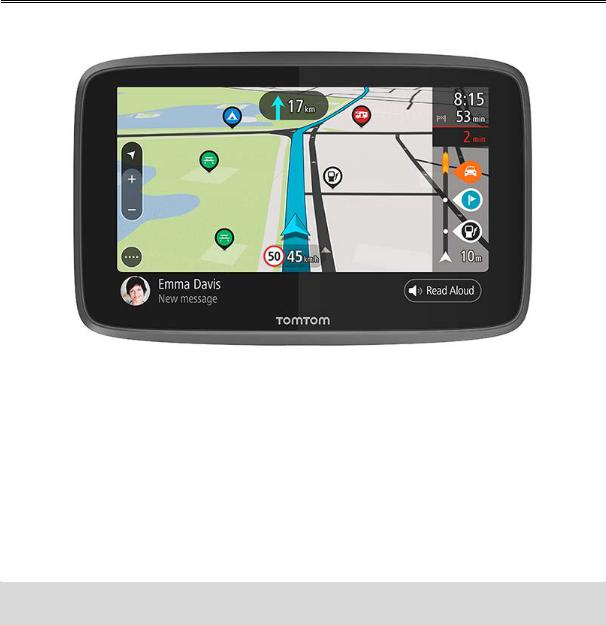
Welcome to navigation with TomTom
This User Manual explains everything you need to know about your new TomTom GO Camper.
To find out what your device can do for you and how to search for camping POIs, have a look at Features.
To install your device and get started, read Get going and What's on the screen.
To connect to TomTom services, look at the TomTom services chapter. You can use TomTom services even on the routes you drive every day.
Once you've had a look around your new TomTom GO Camper, connect it to Wi-Fi® and see if any new updates are available to install. We're always improving our maps and software, so check regularly for updates.
In Quick Search and Step by step search, you can read all about how you can search for addresses, Points of Interest and Contacts. Both types of search give the same result, so choose the type of search that you find easiest to use.
Tip: There are also frequently asked questions (FAQs) at tomtom.com/support. Select your product model from the list or enter a search term.
We hope you enjoy reading about and, most importantly, using your new TomTom GO Camper!
7

Features
Your TomTom GO Camper
Here are the main features of your TomTom GO Camper 620/6200 and shortcuts to more information.
Camping POIs
Find the community's best camping & caravanning Points of Interest (POIs) and plan a route to them. Learn more: Switching on camping POIs
Camper and caravan routing
Drive on the right roads suited to your vehicle type, size, weight and speed, and get an accurate estimated time of arrival. Learn more: Setting your vehicle type
Updates using Wi-Fi®
Get the latest TomTom maps and software for your TomTom GO Camper with a built-in Wi-Fi connection. No computer needed. Learn more: About updates and new items
TomTom Services via your always-connected device or smartphone
Get a permanent connection to TomTom services with your always-connected device. Alternatively activate live services like traffic by connecting to your smartphone using the TomTom MyDrive app. Learn more: About TomTom services
Lifetime maps
We issue new maps seasonally – which include road changes and revised speed limits. Get these updates with no fuss over Wi-Fi at no extra cost, for the useful life of your device. Learn more: About updates and new items
Lifetime TomTom Traffic
Get intelligent routes to help you avoid traffic in real-time. Learn more: Traffic
Hands-free calling
You can make and receive high quality calls in your car. Simply connect your phone to your device. Learn more: About hands-free calling
Smartphone messages
Your TomTom GO Camper can read aloud messages from your phone. Learn more: Receiving an SMS or IM
Compatibility with Siri and Google NowTM
Activate and talk to Siri or Google NowTM by tapping a button on your TomTom GO Camper and using the built-in microphone. Get full access to your personal assistant with your phone safely tucked away in your bag or pocket. Learn more: Talking to Siri or Google Now™
Lifetime Speed Cameras
Advance warnings notify you about upcoming speed cameras. Learn more: Speed Cameras
8
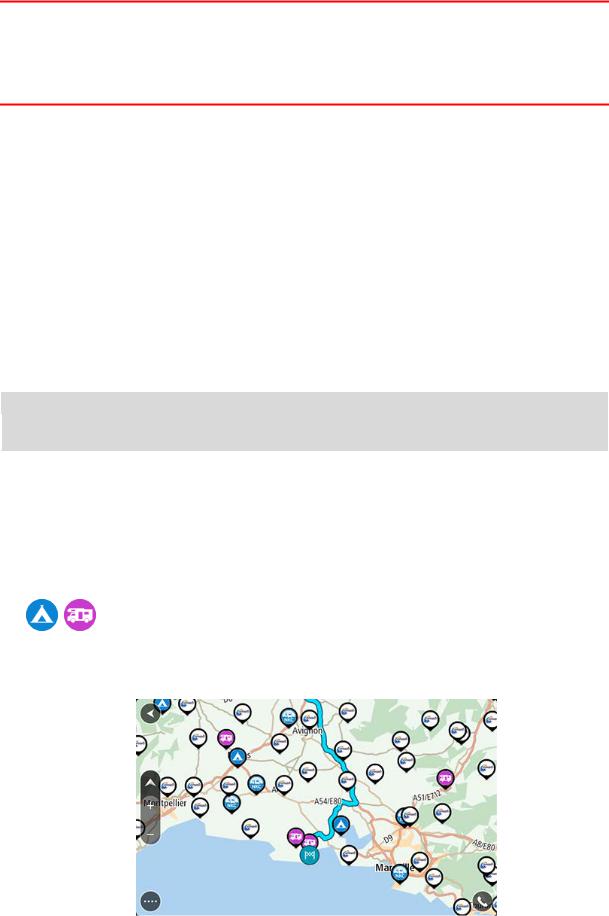
Important: The Speed Cameras service isn't available in all countries. For example, in France, TomTom offers a Danger Zone service and in Switzerland, no speed camera services are permitted at all. In Germany, you are responsible for switching the Speed Cameras service on or off. The issue of the legality of using speed camera services in Germany and other EU countries is not unique. You therefore use this service at your own risk. TomTom accepts no liability arising from the use of this service.
TomTom Road Trips
Discover the world's best routes, and personalise them easily so you can relax and be guided on the drive. Learn more: Road Trips collection - sending a route to your device
TomTom MyDrive
Plan your trip before you get on the road. Add destinations from your smartphone as you go or pre-plan your routes, load your own POIs on MyDrive and sync it all to your device. Learn more: Syncing using TomTom MyDrive
Switching on camping POIs
Your TomTom GO Camper comes with camping-related places of interest (POIs) pre-installed. They are switched off by default so you need to switch them on.
You can choose from camping POIs from ADAC Stellplatzführer and Campingführer, ANWB or Campercontact.
Note: Third-party POIs from ADAC Stellplatzführer and Campingführer, ANWB and Campercontact are only available for certain countries within Europe and are not available in Australia, New Zealand, North America or Canada.
Showing camping POIs on the map
1.Select Appearance in the Settings menu.
2.Select Show POI lists on map.
You see a list of all the POI lists stored on your TomTom GO Camper.
3.Select the POI list that you always want to see on your map, for example, ADAC Stellplatzführer and Campingführer.
You see a symbol for your POI list like those shown below:
4.Return to the map view.
5.Switch off your TomTom GO Camper completely, then switch it on again. Your POIs for camping and RV campsite locations are shown on the map.
9

Tip: Tap a POI to plan a route to it.
Remove camping POIs from the map
1.Select Appearance in the Settings menu.
2.Select Show POI lists on map.
You see a list of all the POI lists stored on your TomTom GO Camper.
3.Select the POI list that you want to remove from your map.
4.Select Do not show.
5.Return to the map view.
6.Switch off your TomTom GO Camper completely, then switch it on again. Your POI list locations have been removed from the map.
Planning a route for a Camper or Caravan
To plan a route using your TomTom GO Camper, use Quick search or Step by step search. Alternatively, select a camping POI on the map to quickly plan a route:
A route is planned and guidance to your destination begins. As soon as you start driving, the guidance view is shown automatically.
Note: Third-party POIs from ADAC Stellplatzführer and Campingführer, ANWB and Campercontact are only available for certain countries within Europe and are not available in Australia, New Zealand, North America or Canada.
Some examples of what to search for
Motorhome stopovers (ADAC Stellplatzführer and Campingführer/ANWB/Campercontact)
Camper/Camping with Wi-Fi
Camper/Camping with waste water disposal
Camper/Camping with drinking water
Camper/Camping with security
Camper/Camping with washing facilities
Campsites (ADAC Stellplatzführer and Campingführer/ANWB/Campercontact)
Camping with chemical toilet disposal
Camping with amenities
Camping with swimming facilities
10

Get going
Installing in your car
Use the supplied mount to install your TomTom GO Camper in your vehicle. Read the instructions about positioning your device before you install your TomTom GO Camper.
To install your TomTom GO Camper, do the following:
1.Connect the supplied USB cable to the mount. If the mount is integrated into your TomTom GO Camper, connect the USB cable to the device.
Note: Use ONLY the USB cable supplied with your TomTom GO Camper. Other USB cables may not work.
2.Connect the USB cable to the USB car charger and plug this into the power supply on your dashboard.
3.Choose the best smooth location, on your windscreen or side window, to mount your TomTom GO Camper.
Tip: If the mount is integrated into your TomTom GO Camper, you can easily change the rotation of your device. Push the button on the back of the device to release the mount, then slide the mount out. Insert it back into the other side of the device.
4.Make sure that both the suction cup on the mount and your windscreen are clean and dry.
5.Press the suction cup of the mount firmly against your windscreen.
6.Turn the rubber grip near the base of the mount in a clockwise direction until you feel it lock.
7.If your mount is not integrated into your TomTom GO Camper, place your TomTom GO Camper in the mount, making sure that it clicks into place.
Dashboard adhesive disks are available as part of a range of accessories for your TomTom GO Camper. For more information, go to tomtom.com/accessories.
Positioning the device
Be careful where you install your TomTom GO Camper. The TomTom GO Camper shouldn't block or interfere with any of the following:
Your view of the road.
The controls in your vehicle.
Your rear-view mirrors.
The airbags.
You should be able to reach your TomTom GO Camper easily without leaning or stretching. In a car, you can attach your TomTom GO Camper to the windscreen or side window or you can use a Dashboard Mount Disk to attach the mount to your dashboard.
Switching on and off
Switching your device on
Press the On/Off button until your device starts. If the device was off you see the map view. If your device was sleeping you see the last screen you were looking at.
11
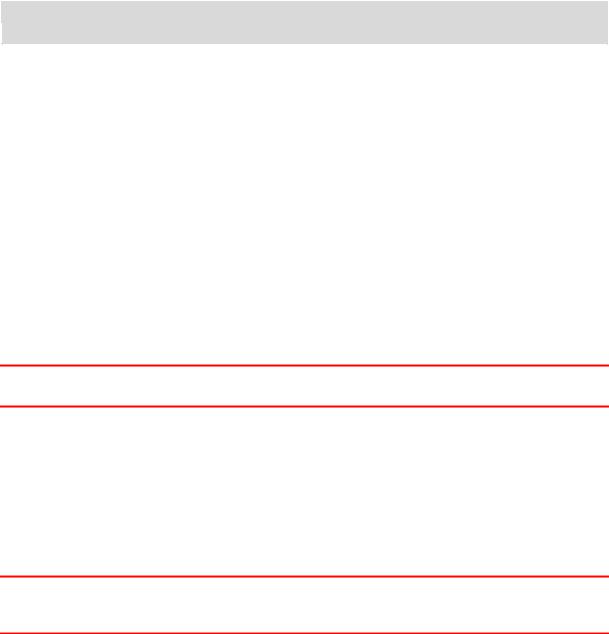
Sending your device to sleep
To send your navigation device to sleep, press the On/Off button and then release it.
You can also press the On/Off button for more than 2 seconds until you see the Sleep and Turn Off buttons. Select Sleep to make the device sleep.
Tip: To send your navigation device to sleep when the USB cable is unplugged or whenever it is removed from the mount, go to Battery settings in the Settings menu.
Switching your device off completely
To switch off your navigation device completely, you can do one of the following:
Press and hold the On/Off button for more than 2 seconds until you see the Sleep and Turn Off buttons. Select Turn Off to switch off the device. Select the "back" button if you don't want to switch your device off.
Press and hold the On/Off button for more than 5 seconds until the device switches off.
Safety Notice
Some navigation devices contain a GSM/GPRS module which can interfere with electrical devices such as cardiac pacemakers, hearing aids and aviation equipment.
Interference with these devices may endanger the health or life of you or others.
If your device includes a GSM/GPRS module, do not use it near unprotected electrical units or in areas where the use of mobile telephones is prohibited, such as hospitals and aircraft.
Setting up
Note: The language you choose will be used for all text on the screen. You can always change the language later in Language and Units in the Settings menu.
When you first switch on your TomTom GO Camper, you have to answer a few questions to set it up. Answer the questions by touching the screen.
GPS reception
When you first start your TomTom GO Camper, it may need a few minutes to determine your position. In future, your position will be found much faster.
To ensure good satellite reception, use your TomTom GO Camper outdoors and keep it upright. Large objects such as tall buildings can sometimes interfere with reception.
Important: QuickGPSfix contains information about satellite positions which helps your TomTom GO Camper find your position faster. QuickGPSfix information is downloaded whenever your device is connected to the internet using any method (Wi-Fi, GPRS, smartphone or USB).
Sending information to TomTom
When you first start navigating or you have reset your TomTom GO Camper, your TomTom GO Camper asks for permission to collect some information about your use of the navigation device. The information is stored on your TomTom GO Camper until we retrieve it. We use it anonymously to improve our products and services. If you use our services, we will also use your location information to deliver the services to you.
You can change whether you send this information with us at any time by doing the following:
1.In the Main Menu, select the Settings button.
2.Select System.
12

3.Select Your information & privacy.
4.Select the button to turn sending of information on or off.
Note: If you choose not to send location information to us, you will no longer receive our services. This is because services need to send the location of your device to TomTom in order to receive the traffic information related to where you are. The end date of your subscription remains the same, even if you do not send this information to us.
You can find current and more detailed information at tomtom.com/privacy.
Memory card slot
Some TomTom navigation devices have a memory card slot that is located on the side or bottom of the device.
Before you use the memory card slot, make sure that your navigation device has the latest software version installed by selecting Updates & New Items in the Settings menu.
When your TomTom GO Camper is up to date, you can use a memory card as extra storage space to store downloaded maps or to store routes and tracks on your device.
Important: Routes and tracks cannot be stored on the same memory card as maps because different memory card formatting is used.
Device not starting
In rare cases, your TomTom GO Camper device may not start correctly or may stop responding to your taps.
First, check that the battery is charged. To charge the battery, connect your TomTom GO Camper device to the car charger. It can take 3 - 5 hours to fully charge the battery depending on the type of device.
Important: Do not charge your device using your vehicle's own USB port because it is not powerful enough.
If this does not solve the problem, you can perform a reset. To do this, press and hold the On/Off button until your TomTom GO Camper begins to restart.
Charging your device
The battery in your TomTom GO Camper charges when you connect it to your TomTom vehicle charger, to your computer or to a USB Home Charger.
Important: Do not charge your device using your vehicle's own USB port because it is not powerful enough.
You are warned when the battery level is low or critical. You lose your connection to some TomTom services when the battery level is low or critical. When the battery is empty, your TomTom GO Camper goes into sleep mode.
Important: On device models START 42/52, START 40/50/60, and GO 51/61, the screen intentionally dims when you connect your device to your computer. The screen also dims if you use a non-TomTom charger that does not provide enough power when charging.
Note: Use ONLY the USB cable supplied with your TomTom GO Camper. Other USB cables may not work.
13
Caring for your TomTom GO Camper
It is important to take care of your device:
Do not open the casing of your device under any circumstances. Doing so may be dangerous and will invalidate the warranty.
Wipe or dry the screen of your device using a soft cloth. Do not use any liquid cleaners.
14
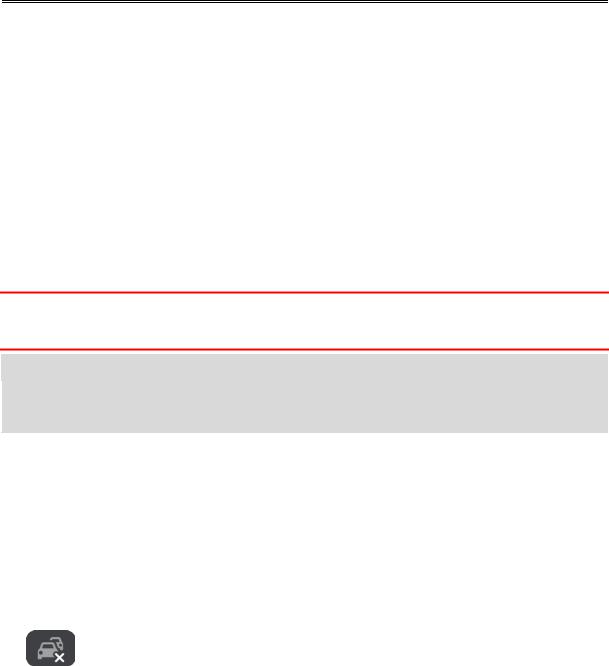
TomTom services
About TomTom services
A TomTom GO Camper connects to TomTom services in one of two ways, depending on the model:
With a permanent connection directly from your TomTom GO Camper. These navigation devices are called 'Always Connected' devices.
With a connection using your smartphone. These devices are called 'Smartphone Connected' devices.
To get TomTom services on your TomTom GO Camper you need the following items:
Any TomTom GO Camper.
A smartphone with a data plan from a mobile services provider.
The TomTom MyDrive app for iOS or Android™ installed on your smartphone.
A TomTom account.
Using TomTom services means that data is sent and received by your phone using your mobile services provider.
Important: You might have additional costs when you use the internet on your phone, especially if you are outside the area covered by your data plan. Check with your mobile services provider for more information.
Note: TomTom services are not available on all TomTom GO Camper devices.
Note: TomTom services are not available in all countries or regions, and not all services are available in all countries or regions. For more information on available services in each region, go to tomtom.com/services.
Traffic & Speed Cameras
TomTom services give you real-time information about traffic and speed cameras on your route.
As soon as your device has an internet connection AND you have agreed to the information and privacy permissions, your device starts receiving traffic information and fixed and mobile speed camera location updates.
To see information about your Traffic and Speed Camera subscriptions, open the Help screen and select About.
To see the status of your Traffic connection, look at the top right of the Main Menu. If your TomTom GO Camper is not connected to Traffic, the Traffic symbol has a cross.
MyDrive
MyDrive gives you control of your device by enabling you to do the following:
Select a destination on your computer, tablet or phone and send it to your device.
Sync your Places and routes with all your devices.
Keep all your data safe.
and more...
For more info, see Syncing using TomTom MyDrive or go to mydrive.tomtom.com.
15

To switch on automatic syncing using MyDrive, select Settings and then MyDrive. Connect to the internet using one of the three methods available and then log in to your TomTom account.
Note: Some TomTom services might not be available in your current location.
16

Connecting a smartphone
Why do I want to connect a smartphone to my device?
If you don't have an always-connected device, connect your smartphone to your TomTom GO Camper to use these features:
TomTom services
Receive real-time traffic information, speed camera updates and MyDrive using your phone’s data connection. This feature uses approximately 7 MB of data per month.
Note: Smartphone-connected devices only. Always-connected devices receive services over GPRS.
Hands-free calls
Receive and make calls on your TomTom GO Camper.
Smartphone messages
SMS and messages from other messaging apps on your smartphone appear on your TomTom GO Camper. Messages can be read aloud so that you can keep your eyes on the road ahead.
Smartphone personal assistant
Get full access to your phone's personal assistant. Tap the phone button in the map or guidance view to talk to the Siri voice recognition software or the Google Now™ service.
Connecting your phone with or without the MyDrive app
You can choose to pair your iOS or Android phone to your device using the MyDrive app or using only Bluetooth® wireless technology.
If you connect using the MyDrive app, you can use all the features listed above. If you connect using only Bluetooth, the smartphone messages feature will not be available.
Connecting a smartphone
You are prompted to connect your smartphone when you start your TomTom GO Camper for the first time, or after you have reset your TomTom GO Camper.
Tip: You can connect more than one phone to your TomTom GO Camper.
Connecting your phone using the MyDrive app
1.On your smartphone, download and install the TomTom MyDrive app from tomtom.com/mydriveapp.
2.Open the MyDrive app. If you are not prompted to connect your phone, tap the device symbol next to the search bar on the app main screen.
3.Switch on Bluetooth on your phone, and make sure your phone is discoverable.
4.On your TomTom GO Camper, open the Main Menu and select Settings.
17

5.Select Bluetooth.
6.Select Add Phone.
7.Follow the steps in the app and on your TomTom GO Camper to pair your phone with your TomTom GO Camper.
Your phone's call history and frequent contacts are imported into your navigation device.
When your phone is connected and hands-free calling is enabled, you see this icon on the map or guidance view:
You can easily change the phone features you want to use in Bluetooth in the Settings menu.
Connecting your phone using only Bluetooth
If you connect using only Bluetooth, the smartphone messages feature will not be available.
1.Switch on Bluetooth on your phone, and make sure your phone is discoverable.
2.Switch on the Personal Area Network (PAN) on your phone.
3.On your device, open the Main Menu and select Settings.
4.Select Bluetooth.
5.Select Add Phone.
6.Select the question mark in the bottom right of the screen.
7.Select Don't want to use the app? Follow these instructions.
8.On your phone, go to Bluetooth settings. Wait for your TomTom device to appear in the list shown on your phone. Tap it to pair.
9.On your device, select Pair to accept the pairing request from your phone. If you have an iPhone device you must also accept the second pairing request.
10.Select Done.
Your phone's call history and frequent contacts are imported into your navigation device.
When your phone is connected and hands-free calling is enabled, you see this icon on the map or guidance view:
Disconnecting a smartphone
You can disconnect your phone in the following ways:
Switch off Bluetooth on your phone.
Switch off or reset your TomTom GO Camper.
Select Bluetooth in the Settings menu. Select your phone. Select Unpair to disconnect your device from your phone.
Remove your device from the Bluetooth paired device list if you want to remove it permanently.
18

Reconnecting a smartphone
Your TomTom GO Camper will remember your phone and find it automatically when your phone's Bluetooth is switched on and the phone is in range of your navigation device.
Tip: Open the MyDrive app to use the smartphone messages feature.
When your phone is connected and hands-free calling is enabled, you see this button on the map or guidance view:
Your TomTom GO Camper syncs your call history and phone contacts again.
If you lose connection to your phone you see a Bluetooth symbol on the map or guidance view.
Unable to get a connection
To check the connection status of your phone, do the following:
1.Select Bluetooth in the Settings menu.
The features that are currently connected are listed next to your phone.
2.If no features are shown, select the phone you want to connect to.
3.Make sure all the toggles are switched on, or select the option to find out more information about how to connect.
If your TomTom GO Camper cannot connect to your phone, or you have no internet connection, also check the following:
Your phone is shown on your TomTom GO Camper.
Your phone's Bluetooth is switched on.
Your data plan with your mobile services provider is active, and you can access the internet on your phone.
Personal Area Networks
Smartphone-connected devices only
Your phone shares its internet connection by using the phone's Bluetooth® and Personal Area Network (PAN) functions.
Depending on your phone's Operating System, this network, or PAN, might be called one of the following names:
Personal Hotspot
Tethering or Bluetooth Tethering
Tether or Bluetooth Tether
The PAN function is probably already in your phone's Operating System, or you can download an app to create a PAN.
Note: Some mobile service providers don't allow their users to use a PAN. If your phone doesn't have the PAN function, you should contact your service provider for more information.
Please check the user guide for your phone if you are having trouble finding the settings. For more help, go to tomtom.com/connect.
19
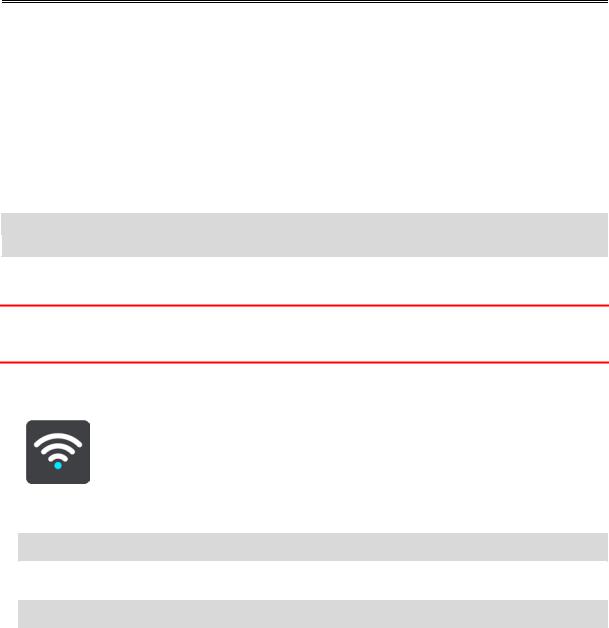
Wi-Fi connection
About Wi-Fi®
The easiest way to manage your maps, software and all your device content is over a Wi-Fi connection.
Your device can be updated using Wi-Fi without the need to connect to a computer. It remembers previously connected Wi-Fi networks so you can keep your device up to date when you are in range of that network.
Before you begin, make sure that you have access to an unrestricted Wi-Fi network, such as a personal home network. Please be aware that updating over a public Wi-Fi network, such as in an airport or hotel, is not recommended because the updates can be large and the network connection may not be stable.
Tip: If you don’t have access to a Wi-Fi network or your Wi-Fi network is slow or not stable, you can use a USB connection to update using MyDrive Connect on your computer.
Connecting to Wi-Fi
Important: Wi-Fi connections that require a web sign-in are not supported on the TomTom GO Camper. These types of Wi-Fi connections are frequently found in public places, for example in hotels, shops and restaurants.
To connect to a Wi-Fi network, do the following:
1.Select Settings in the Main Menu, then select Wi-Fi.
You see a list of available Wi-Fi networks and saved Wi-Fi networks that are currently out of range.
Tip: Scroll down to go to the list of out-of-range saved networks.
2.Select the Wi-Fi network that you want to connect to. If the network is secure enter the password. If no password is required, you are connected straight away.
Tip: For advanced options for a Wi-Fi network see Wi-Fi in the Settings menu.
3.Select Done, then select Connect.
It may take a few moments for your device to connect to the Wi-Fi network. If it takes too long, please check the identity and password you used for the Wi-Fi network.
Once your device has successfully connected to the Wi-Fi network, you see the status Connected under the Wi-Fi network name.
Forgetting a Wi-Fi network
To forget a Wi-Fi network from your list of available networks do the following:
20
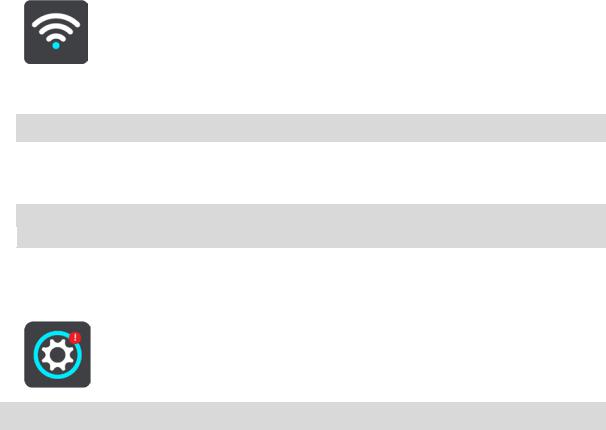
1.Select Settings in the Main Menu, then select Wi-Fi.
You see a list of available Wi-Fi networks and saved Wi-Fi networks that are currently out of range.
Tip: Scroll down to go to the list of out-of-range saved networks.
2.Select the Wi-Fi network that you want to forget.
3.Select Modify then select Forget.
Your device is disconnected from the Wi-Fi network.
Note: The Wi-Fi network still appears in the list, but your device will not automatically connect to it.
About updates and new items
A red exclamation mark in the Settings button shows you that updates or new items are available.
Tip: You may also be offered a system software update when you add a new map.
The following updates or new items can be offered:
System software updates
A System software update is a software update for the device itself. You see an explanation about why the update is required and which features are changing or being added, if any.
If you have not used your device for a long time, you may get asked to install a required software update when you use your device again. If you don't install the update, the following issues can occur:
Your device cannot be told about any updates and no further updates would be possible.
Your device cannot show the details of the required software updates, for example, size, version, etc.
Your device cannot add or delete any maps.
Map updates
When a map update is offered, install it as soon as possible so that you always drive with the latest map.
The existing map is deleted before the map update is installed. If you cancel a map update then you will no longer have the map on your TomTom GO Camper. If this happens, go to Maps in the Settings menu and download the map again.
Map Share updates
These updates are created from changes made and shared by other TomTom users and contain the following changes or updates:
Speed limits
Street names
21
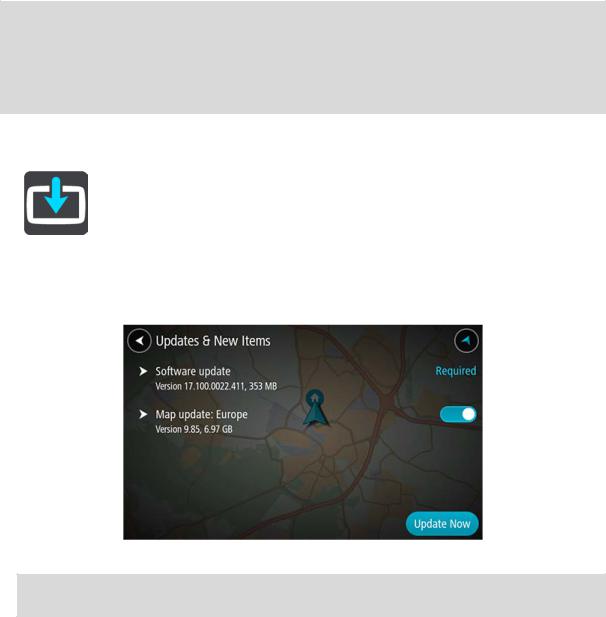
Recently blocked and unblocked roads
Traffic directions
Turn restrictions
For more information, see Map Share.
Speed Camera updates
When a Speed Camera update is offered, you can choose which countries on your map you want to update.
Voices
You may also be offered new voices as an update.
Installing updates and new items
Note: If Wi-Fi is not available or is not stable, you see instructions on how to get updates using a USB connection to your computer.
Tip: When updating using Wi-Fi, we recommend that you keep you device connected to a power supply.
Tip: Press the On/Off button to switch off the screen and save battery power while downloading an update.
To select and install updates and new items, do the following:
1.Select Updates & New Items.
The Updates & New Items button shows you how many new updates and items are available to install.
2.Select the items and updates that you want to install. The list includes items you purchased in the TomTom web shop.
3.Log in to your TomTom account when asked to do so.
Tip: Logging in to use Updates and New Items also logs you in ready for using TomTom MyDrive.
22
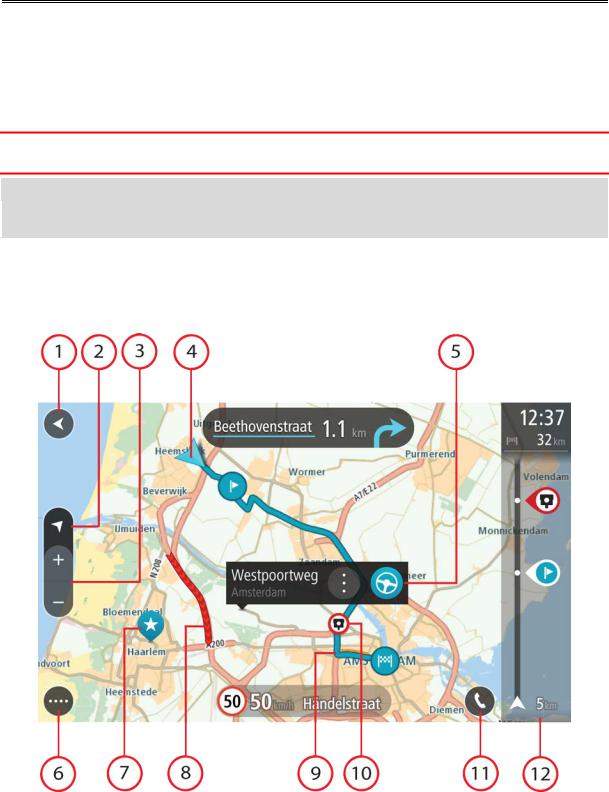
What's on the screen
The map view
The map view is shown when you have no planned route. Your actual location is shown as soon as your TomTom GO Camper has found your GPS location.
You can use map view in the same way as you might look at a traditional paper map. You can move around the map using gestures, and zoom using the zoom buttons.
Important: Everything on the map is interactive including the route and the map symbols - try selecting something and see what it does!
Tip: To open a pop-up menu for an item on the map, for example a route or a POI, select the item to open the menu. To select a location on the map, select and hold the location until the pop-up menu opens.
The map shows your current location and many other locations such as your My Places locations. If you have not planned a route the map is zoomed out to show the area around your location.
If you have planned a route, your complete route is shown on the map. You can add stops to your route directly from the map. When you start to drive, the guidance view is shown.
23
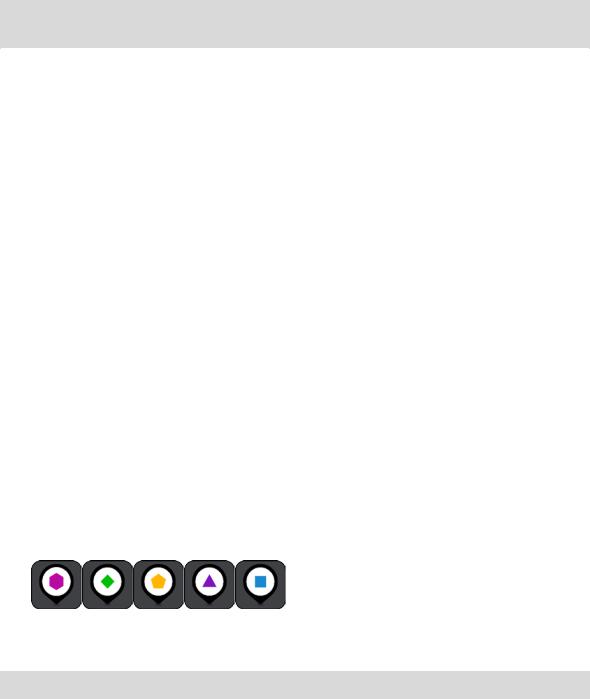
1.Back button. This button returns the map to an overview of your whole route or, if no route is planned, moves the map to put your current location at the centre.
2.Switch view button. Select the switch view button to change between the map view and the guidance view. When in map view while driving, the small arrow rotates to indicate your direction of travel relative to north, with north being up.
3.Zoom buttons. Select the zoom buttons to zoom in and out.
4.Current location. This symbol shows your current location. Select it to add it to My Places or search near your current location.
Note: If your TomTom GO Camper cannot find your location the symbol appears grey. Note: You cannot change the current location symbol.
5.Selected location. Press and hold to select a location on the map. Select the pop-up menu button to show options for the location, or select the Drive/Ride button to plan a route to the location.
6.Main Menu button. Select the button to open the Main Menu.
7.Map symbols. Symbols are used on the map to show your destination and your saved places:
 Your destination.
Your destination.
 Your home location. You can set your home location in My Places.
Your home location. You can set your home location in My Places.
 Your work location. You can set your work location in My Places.
Your work location. You can set your work location in My Places.
 A stop on your route.
A stop on your route.
 A location saved in My Places.
A location saved in My Places.
 A marked location.
A marked location.
 When a search for POIs near destination is done and the results are shown on the map, less important POIs are shown as black pins with white crosses.
When a search for POIs near destination is done and the results are shown on the map, less important POIs are shown as black pins with white crosses.
|
Symbols to show your community POI locations. |
Select a map symbol to open the pop-up menu, then select the menu button to see a list of actions you can take.
8.Traffic information. Select the traffic incident to display more information.
Note: Traffic information is only available if your TomTom GO Camper has TomTom Traffic.
9.Your route, if you have planned a route. Select the route to clear it, change the route type, add a stop or save changes to your route.
10. Speed cameras or danger zones on your route. Select the speed camera or danger zone symbol to display more information.
24
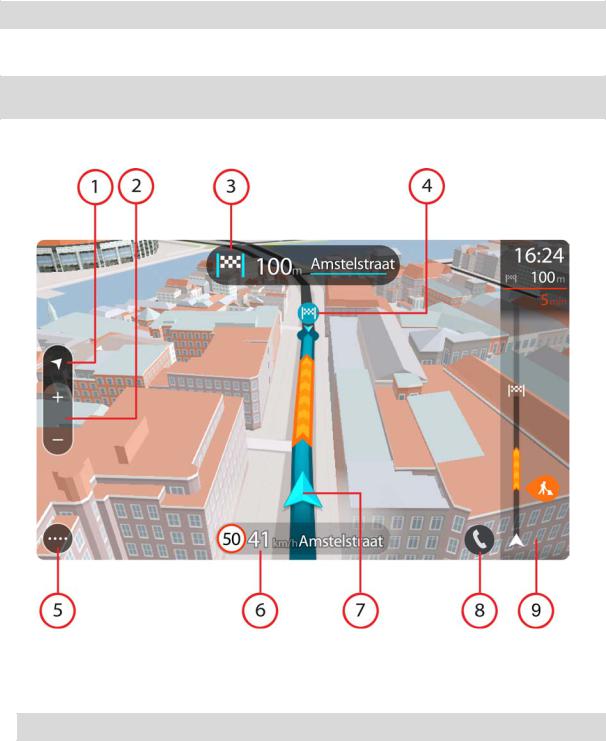
11.Select the phone button in the map or guidance view to activate your phone and make hands-free calls.
12.Route bar. The route bar is shown when you have planned a route.
The guidance view
The guidance view is used to guide you along the route to your destination. The guidance view is shown when you start driving. You see your current location and details along your route, including 3D buildings in some cities.
Note: 3D buildings in guidance view are not available on all devices.
The guidance view is normally in 3D. To show a 2D map with the map moving in your direction of travel, change the 2D and 3D default settings.
Tip: When you have planned a route and the 3D guidance view is shown, select the switch view button to change to the map view and use the interactive features.
When your TomTom GO Camper starts after sleeping and you have a route planned, you are shown the guidance view with your current location.
1.Switch view button. Select the switch view button to change between the map view and the guidance view. When in guidance view, if you are driving, the small arrow rotates to indicate your direction of travel relative to north, with north being up.
2.Zoom buttons. Select the zoom buttons to zoom in and out.
Tip: On some devices you can also pinch to zoom in and out.
3.Instruction panel. This panel shows the following information:
25

The direction of your next turn.
The distance to your next turn.
The name of the next road on your route.
Lane guidance at some junctions.
Note: Select the instruction panel to see a list of turn-by-turn text instructions for your planned route.
4.Route symbols. Symbols are used on your route to show your starting location, your stops, and your destination.
5.Main Menu button. Select the button to show the Main Menu.
6.Speed panel. This panel shows the following information:
The speed limit at your location.
Your current speed. If you drive more than 5 km/h or 3 mph over the speed limit the speed panel turns red. If you drive less than 5 km/h or 3 mph over the speed limit the speed panel turns orange.
The name of the street you are driving on.
The speed camera or risk zone report button.
7.Current location. This symbol shows your current location. Select the symbol or the speed panel to open the quick menu.
Note: If your TomTom GO Camper cannot find your location the symbol appears grey. Note: You cannot change the current location symbol.
8.Select the phone button in the map or guidance view to activate your phone and make hands-free calls.
9.Route bar. The route bar is shown when you have planned a route.
The route bar
The route bar is shown when you have planned a route. It has an arrival information panel at the top, and a bar with symbols underneath.
Tip: You can also choose to see a wider route bar showing additional route information (not available on all devices or apps).
Note: The distance ahead shown by the route bar depends on the overall length of your route.
26

The arrival information panel shows the following information:
Tip: If your destination is in a different time zone, you see a plus (+) or a minus (-) sign and the time difference in hours and half hours in the arrival information panel. The estimated time of arrival is the local time at your destination.
The estimated time that you will arrive at your destination.
The length of time to drive to the destination from your current location.
A parking button is shown near the destination flag when parking is available near your destination.
If you have stops on your route, select this panel to change between information about the next stop and your final destination.
You can choose the information you see on the arrival information panel.
Traffic status - if your TomTom GO Camper isn't receiving any traffic information, a symbol showing traffic with a cross appears underneath the arrival information panel.
The bar uses symbols to show the following information:
A faster route, if there is traffic on your route.
The stops on your route.
Tip: To quickly remove a stop, select it in the route bar and use the pop-up menu.
Petrol stations that are directly on your route.
TomTom Traffic incidents.
TomTom Speed Cameras and Danger Zones.
Rest stops directly on your route.
You can choose the information you see on your route.
The symbols are in the order that they occur on your route. For traffic incidents, the symbol for each incident alternates between showing the type of incident and the delay in minutes. Select a symbol to see more information about a stop, an incident or a speed camera. If a symbol is shown on top of another symbol, selecting the symbols zooms in on the route bar to show each symbol separately. You can then select a symbol.
The total time delay due to traffic jams, weather, and other incidents on your route, including information provided from historical road usage, is shown above the symbols.
For a complete list of incident types, see Traffic incidents.
The bottom of the route bar represents your current location and shows the distance to the next incident on your route. In addition, you can choose to see the current time if you switch the setting on.
Note: To make the route bar more readable some incidents may not be shown. These incidents will always be of minor importance and only cause short delays.
The route bar also shows status messages, for example Finding fastest route or Playing route preview.
Distances and the route bar
The distance ahead shown on the route bar depends on the length of your route, or the distance remaining on your route.
27

For remaining distances longer than 50 km (31 miles), only the next 50 km (31 miles) is shown. The destination icon is not shown.
Tip: You can scroll the route bar to see your whole route (not available on iOS).
For remaining distances between 10 km (6 miles) and 50 km (31 miles), the complete distance is shown. The destination icon is shown fixed at the top of the route bar.
For remaining distances of less than 10 km (6 miles) the complete distance is shown. The destination icon moves down towards the chevron symbol as you get nearer to your destination.
The top half of the route bar shows twice the distance of the bottom half, as shown in the following examples:
A remaining distance of 50 km on the route bar is split into 34 km (21 miles) at the top and 16 km (9 miles) at the bottom.
A remaining distance of 10 km on the route bar is split into 6.6 km (4 miles) at the top and 3.3 km (2 miles) at the bottom.
The route bar is constantly updated as you drive.
The quick menu
To open the quick menu, select the current location symbol or the speed panel in the guidance view.
You can then do any of the following:
Mark a location
Report a new speed camera
Change a speed limit
Avoid a blocked road
See your current location or your latitude/longitude if not on a named road.
Navigation buttons
On the map view or guidance view, select the Main Menu button to open the Main Menu.
The following navigation buttons are available in the Main Menu screen, in addition to other buttons and symbols:
Note: Not all features are supported on all devices.
Search / Drive To |
Select this button to search for an address, a place or a Point of Interest, |
|
|
then plan a route to that location. |
|
|
|
|
|
Note: Search is used for Quick search. Drive To is used for Step by step |
|
|
search. |
|
|
|
|
|
|
|
Address |
In the Drive To menu, select this button to search for an address then |
|
|
plan a route to that location. |
|
28
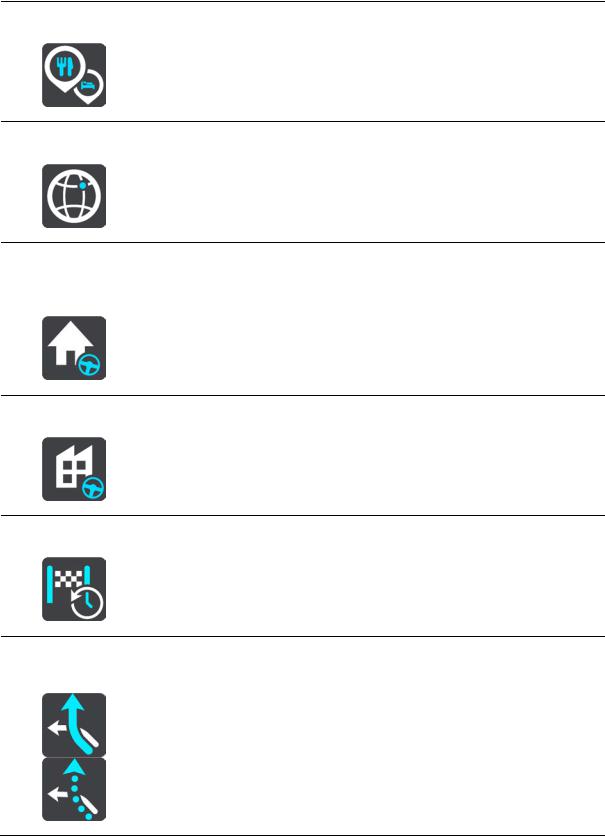
Point of Interest |
In the Drive To menu, select this button to search for a point of interest, |
|
then plan a route to that location. |
Latitude Longitude |
In the Drive To menu, select this button to search for a latitude-longitude |
|
coordinate, then plan a route to that location. |
Select this button to drive to your home location. If this button is not included in your Main Menu, go to My Places to set up your home location.
Drive Home
Drive to Work |
Select this button to drive to your work location. If this button is not |
|
included in your Main Menu, go to My Places to set up your work location. |
Recent Destination |
Select this button to open the list of your recent destinations. Select a |
|
recent destination to plan a route to that destination. |
Current Route / |
Select this button to clear or change your planned route or track. |
Current Track |
|
29

My Places |
Select this button to show your saved places. |
|
|
|
|
My Routes |
Select this button to show your saved routes. |
|
|
|
|
Record Route |
Select this button to start or stop recording a track. |
|
|
|
|
Voice Control |
Select this button to start voice control. |
|
|
Tip: You can also say the wake-up phrase to start voice control. |
|
|
|
|
|
|
|
|
|
|
Parking |
Select this button to find car parks. |
|
|
|
|
Petrol Station |
Select this button to find petrol stations. |
|
|
|
|
Report Speed |
Select this button to report a speed camera. |
|
Camera |
|
|
30
